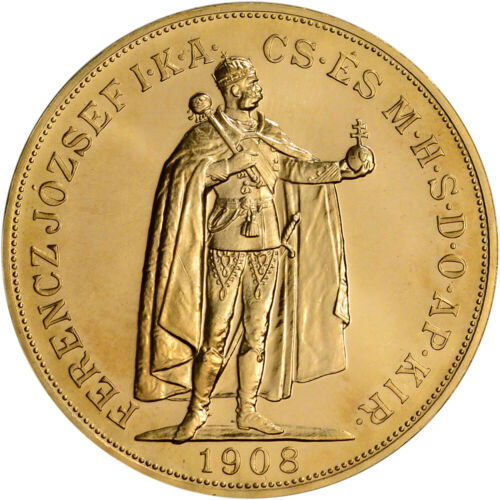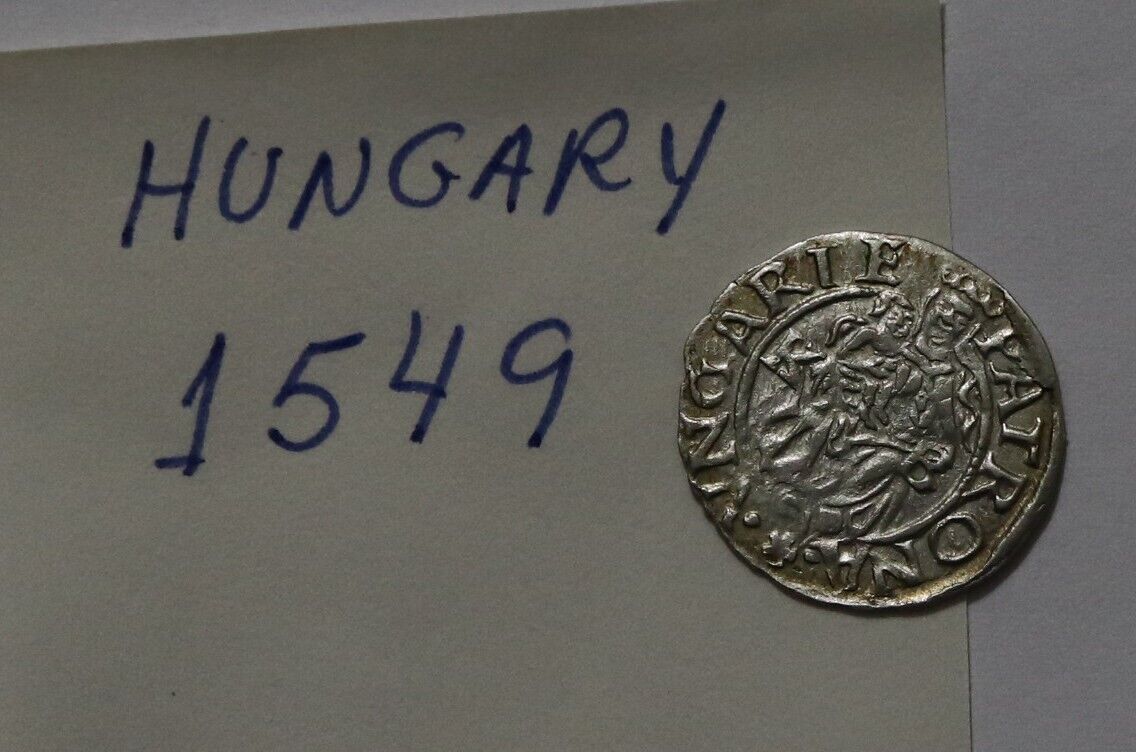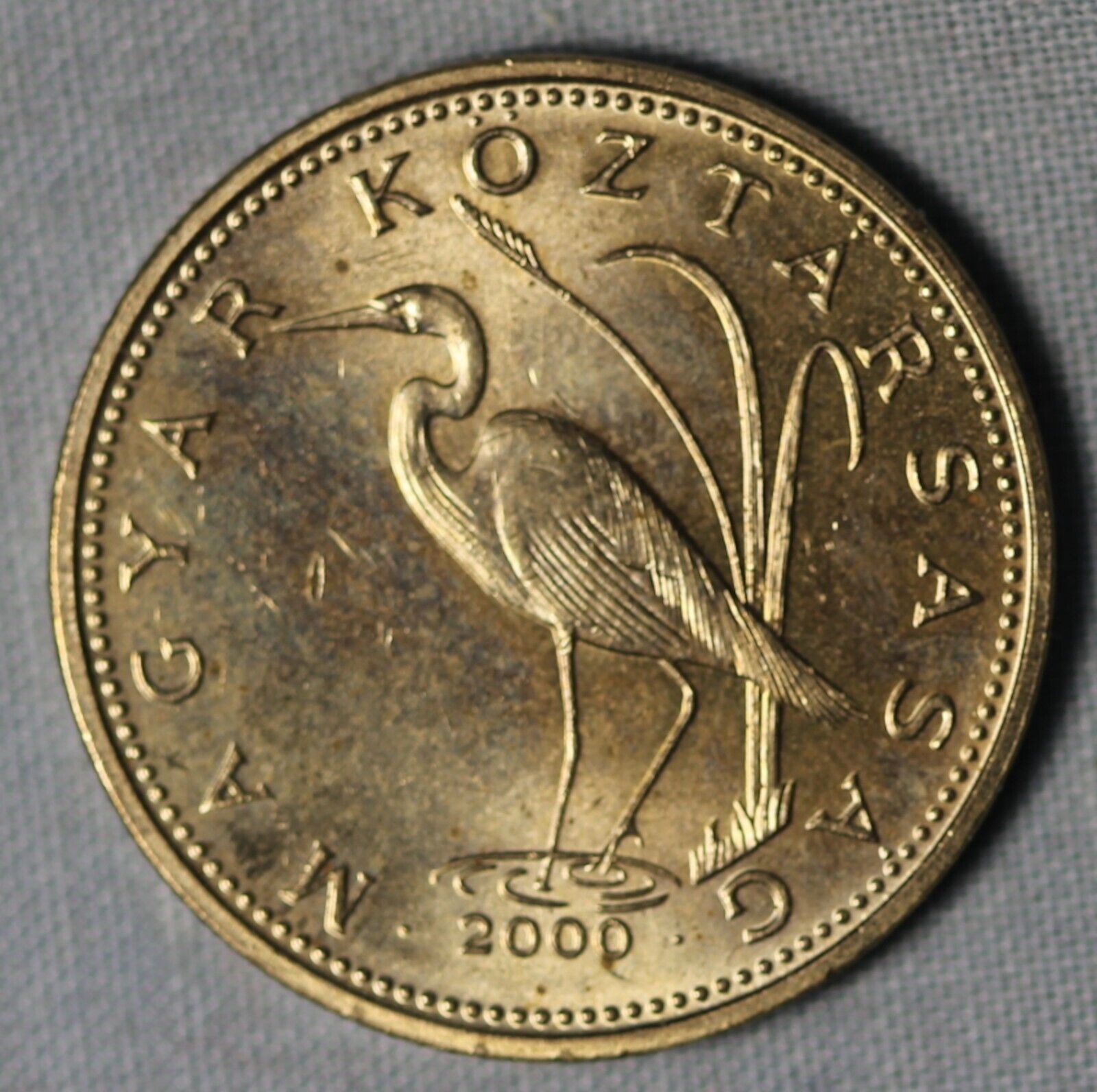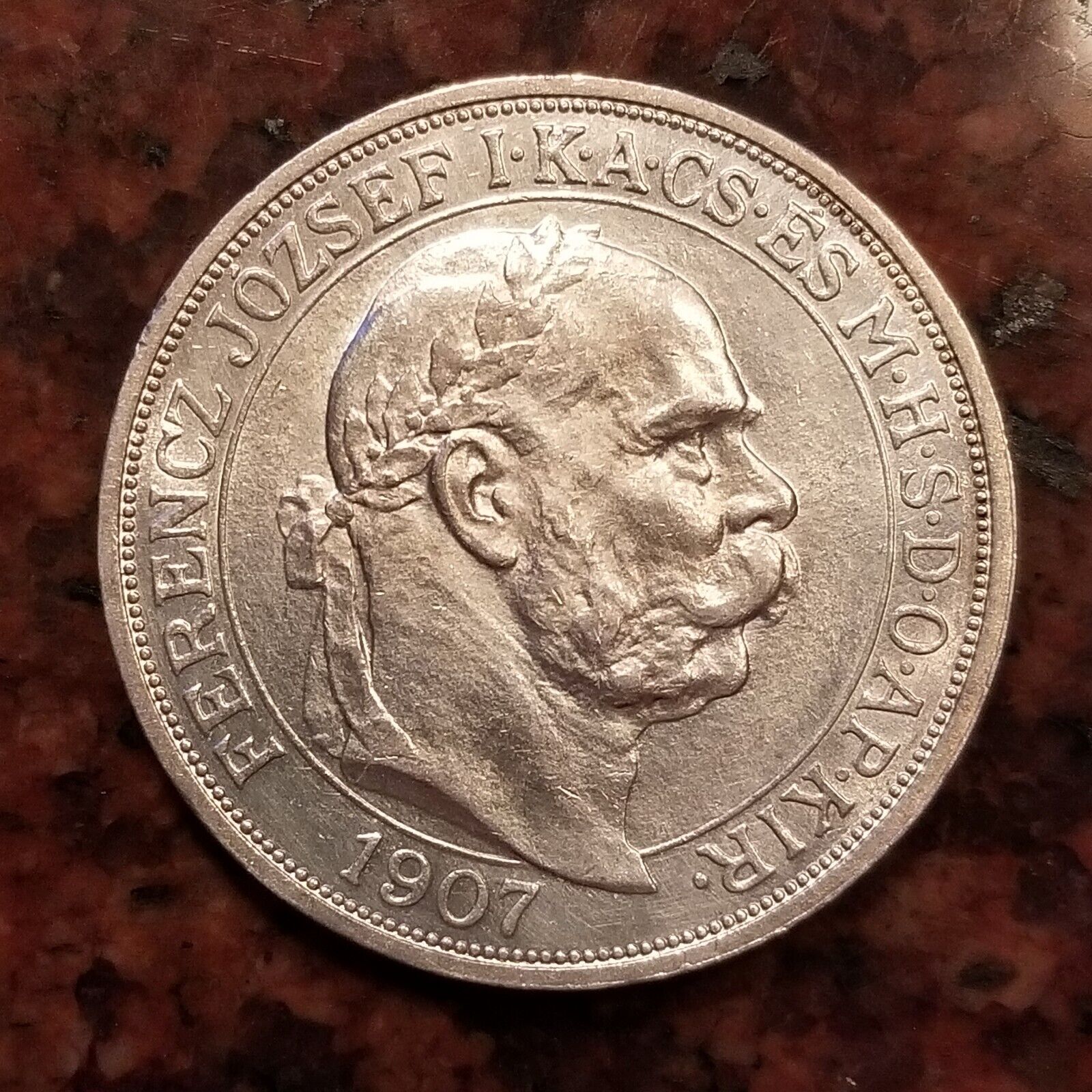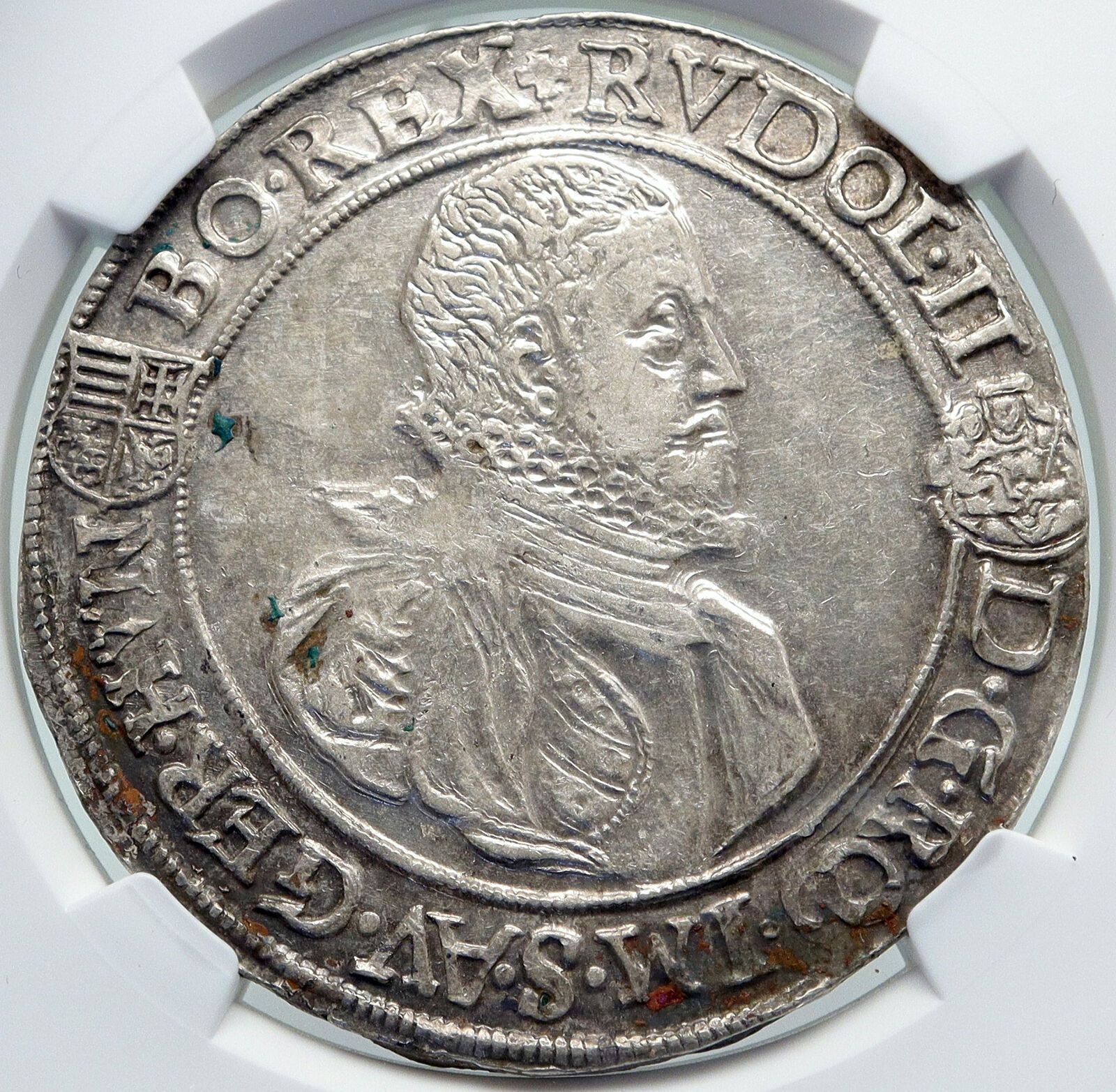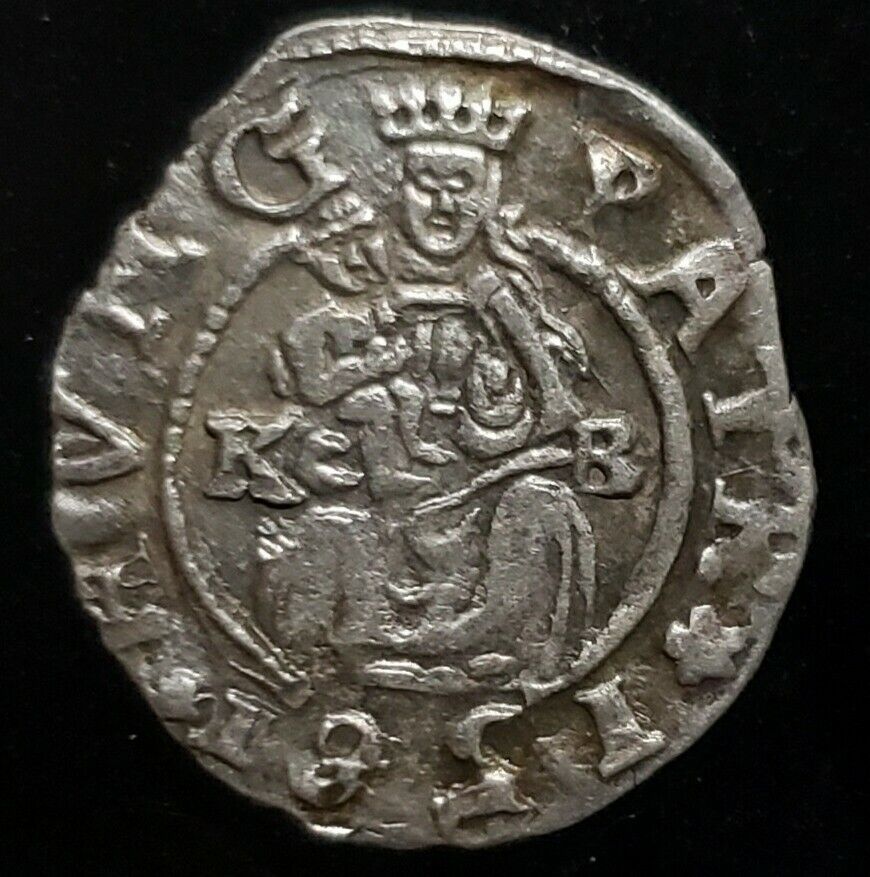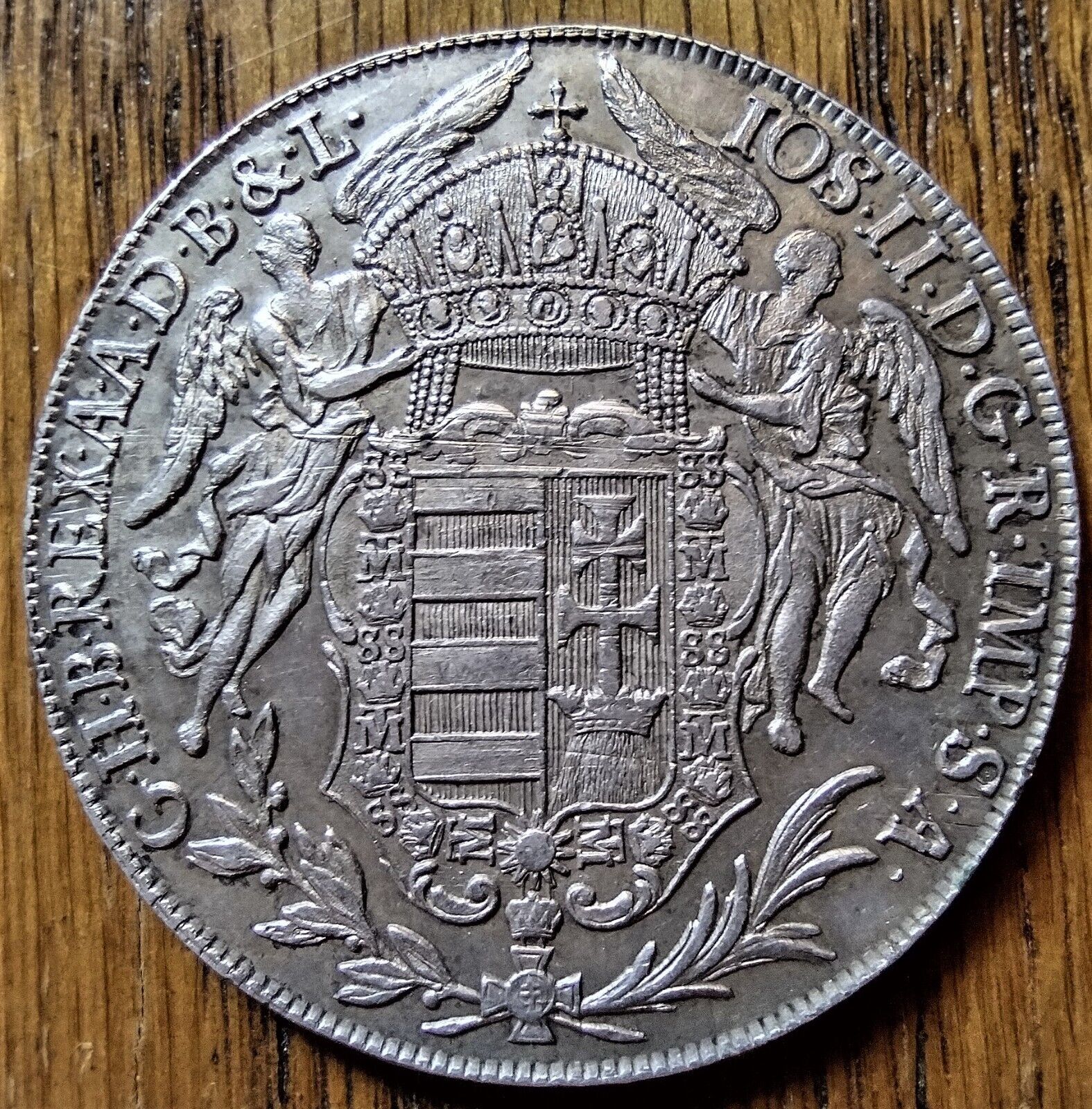-40%
1935 HUNGARY Admiral Miklos Horthy Antique Silver 5 Pengo Hungarian Coin i81556
$ 94.32
- Description
- Size Guide
Description
Item: i81556Authentic Coin of:
Hungary
- 200th Anniversary of the Death of Rakoczi
1939
Silver 2 Pengő 27mm (
9.96
grams) 0.640 Silver (0.2058 oz. ASW)
Reference: KM# 514
MAGYAR KIRÁLYSÁG 2 PENGŐ BP 1935, Coat of arms, value below.
II. RÁKÓCZI FERENC 1676-1735 .BERÁN.L., Francis II Rákóczi to right.
You are bidding on the exact item pictured, provided with a Certificate of Authenticity and Lifetime Guarantee of Authenticity.
Francis II Rákóczi
(27 March 1676 - 8 April 1735) was a Hungarian nobleman and leader of the Hungarian uprising against the Habsburgs in 1703-11 as the prince (Hungarian:
fejedelem
) of the Estates Confederated for Liberty of the Kingdom of Hungary. He was also Prince of Transylvania, an Imperial Prince, and a member of the Order of the Golden Fleece. Today he is considered a national hero in Hungary.
His full title was:
Franciscus II.
Dei Gratia Sacri Romani Imperii & Transylvaniae princeps
Rakoczi
. Particum Regni Hungariae Dominus & Siculorum Comes, Regni Hungariae Pro Libertate Confoederatorum Statuum necnon Munkacsiensis & Makoviczensis Dux, Perpetuus Comes de Saros; Dominus in Patak, Tokaj, Regécz, Ecsed, Somlyó, Lednicze, Szerencs, Onod.
[
citation needed
]
His name is historically also spelled
Rákóczy
, in Hungarian:
II. Rákóczi Ferenc
, in Slovak:
František II. Rákoci
, in German:
Franz II. Rákóczi
, in Croatian:
Franjo II. Rákóczy (Rakoci, Rakoczy)
, in Romanian:
Francisc Rákóczi al II-lea
, in Serbian
Ференц II Ракоци
.
As the House of Habsburg was on the verge of dying out in Spain, France was looking for allies in its fight against Austrian hegemony. Consequently, they established contact with Rákóczi and promised support if he took up the cause of Hungarian independence. An Austrian spy seized this correspondence and brought it to the attention of the Emperor. As a direct result of this, Rákóczi was arrested on 18 April 1700, and imprisoned in the fortress of Wiener Neustadt (south of Vienna). It became obvious during the preliminary hearings that, just as in the case of his grandfather Péter Zrínyi, the only possible sentence for Ferenc was death. With the aid of his pregnant wife Amelia and the prison commander, Rákóczi managed to escape and flee to Poland. Here he met with Bercsényi again, and together they resumed contact with the French court. Three years later, the War of the Spanish Succession caused a large part of the Austrian forces in the Kingdom of Hungary to temporarily leave the country. Taking advantage of the situation, Kuruc forces began a new uprising in Munkács, and Rákóczi was asked to head it. He decided to invest his energies in a war of national liberation, and accepted the request. On 15 June 1703, another group of about 3000 armed men headed by Tamás Esze joined him near the Polish city of Ławoczne. Bercsényi arrived too, with French funds and 600 Polish mercenaries.
Most of the Hungarian nobility did not support Rákóczi's uprising, because they considered it to be no more than a peasant rebellion. Rákóczi's famous call to the nobility of Szabolcs County seemed to be in vain. He did manage to convince the Hajduk (Hungarian soldiers) (emancipated peasant warriors) to join his forces, so his forces controlled most of Kingdom of Hungary to the east and north of the Danube by late September 1703. He continued by conquering Transdanubia soon after. Since the Austrians had to fight Rákóczi on several fronts, they felt obliged to enter negotiations with him. However, the victory of Austrian and British forces against a combined French-Bavarian army in the Battle of Blenheim on 13 August 1704, provided an advantage not only in the War of the Spanish Succession, but also prevented the union of Rákóczi's forces with their French-Bavarian allies.
This placed Rákóczi into a difficult military and financial situation. French support gradually diminished, and a larger army was needed to occupy the already-won land. Meanwhile, supplying the current army with arms and food was beyond his means. He tried to solve this problem by creating a new copper-based coinage, which was not easily accepted in Hungary as people were used to silver coins. Nevertheless, Rákóczi managed to maintain his military advantage for a while - but after 1706, his army was forced into retreat.
A meeting of the Hungarian Diet (consisting of 6 bishops, 36 aristocrats and about 1000 representatives of the lower nobility of 25 counties), held near Szécsény (Nógrád County) in September 1705, elected Rákóczi to be the "vezérlő fejedelem" - (ruling) prince - of the Confederated Estates of the Kingdom of Hungary, to be assisted by a 24-member Senate. Rákóczi and the Senate were assigned joint responsibility for the conduct of foreign affairs, including peace talks.
Encouraged by England and the Netherlands, peace talks started again on 27 October 1705 between the Hungarians and the Emperor. Both sides varied their strategy according to the military situation. One stumbling block was the sovereignty over Transylvania - neither side was prepared to give it up. Rákóczi's proposed treaty with the French was stalled, so he became convinced that only a declaration of independence would make it acceptable for various powers to negotiate with him. In 1706, his wife (whom he had not seen in 5 years, along with their sons József and György) and his sister were both sent as peace ambassadors, but Rákóczi rejected their efforts on behalf of the Emperor.
In 1707 during the Great Northern War he was one of the candidates to the throne of Poland, supported by Elżbieta Sieniawska.
On Rákóczi's recommendation, and with Bercsényi's support, another meeting of the Diet held at Ónod (Borsod county) declared the deposition of the House of Habsburg from the Hungarian throne on 13 June 1707. But neither this act, nor the copper currency issued to avoid monetary inflation, were successful. Louis XIV refused to enter into treaties with Prince Rákóczi, leaving the Hungarians without allies. There remained the possibility of an alliance with Imperial Russia, but this did not materialize either.
At the Battle of Trencsén (German:
Trentschin
, Latin:
Trentsinium
, Comitatus Trentsiniensis, today Trenčín in Slovakia), on 3 August 1708 Rákóczi's horse stumbled, and he fell to the ground, which knocked him unconscious. The Kuruc forces thought him dead and fled. This defeat was fatal for the uprising. Numerous Kuruc leaders transferred their allegiance to the Emperor, hoping for clemency. Rákóczi's forces became restricted to the area around Munkács and Szabolcs County. Not trusting the word of János Pálffy, who was the Emperor's envoy charged with negotiations with the rebels, the Prince left the Kingdom of Hungary for Poland on 21 February 1711.
Miklós Horthy de Nagybánya
(Hungarian:
Vitéz nagybányai Horthy Miklós
; English:
Nicholas Horthy
; German:
Nikolaus Horthy Ritter von Nagybánya
; 18 June 1868 - 9 February 1957) was a Hungarian admiral and statesman, who became the Regent of Hungary. He served as Regent of the Kingdom of Hungary between World Wars I and II and throughout most of World War II, from 1 March 1920 to 15 October 1944. He was styled "His Serene Highness the Regent of the Kingdom of Hungary" (Hungarian:
Ő Főméltósága a Magyar Királyság Kormányzója
).
Horthy started his career as a Sub-Lieutenant in the Austro-Hungarian Navy in 1896 and attained the rank of Rear-Admiral in 1918. He saw action in the Battle of the Strait of Otranto and became Commander-in-Chief of the Austro-Hungarian Navy in the last year of the First World War, he was promoted to Vice-Admiral and Commander of the Fleet when the previous Admiral was dismissed from his post by Emperor Karl following mutinies. In 1919, following a series of revolutions and external interventions in Hungary from Romania, Czechoslovakia, and Yugoslavia, Horthy returned to Budapest with the National Army and was subsequently invited to become Regent of the Kingdom by parliament. Horthy led a national conservative government through the interwar period, banning the Hungarian Communist Party as well as the Arrow Cross Party, and pursuing an irredentist foreign policy in the face of the Treaty of Trianon. King Charles IV unsuccessfully attempted twice to return to Hungary until, in 1921, the Hungarian Government caved in to Allied threats to renew hostilities. King Charles was escorted out of Hungary on a British warship into exile.
In the late 1930s, Horthy's foreign policy led him into a reluctant alliance with Germany against Soviet Russia. With the begrudging support of Adolf Hitler, Horthy was able to recover certain Hungarian lands removed from them by the Allies. Under Horthy's leadership, Hungary gave support to Polish refugees in 1939 and participated in a supportive (as opposed to front-line) role in the German invasion of the Soviet Union in 1941 and during the German invasion of Yugoslavia the same year occupied and annexed former Hungarian territories which had been given to the Kingdom of Serbs, Croats and Slovenes (from 1929 Yugoslavia) by the Allies after the First World War. However, Horthy's reluctance to contribute to the German war effort and the Holocaust in Hungary, as well as refusing to hand over more than 600,000 of the 825,000 Hungarian Jews to German authorities, coupled with several attempts to strike a secret deal with the Allies of World War II after it had become obvious that Axis would lose the war, eventually led the Germans to invade and take control of the country in March 1944 in Operation Margarethe. In October 1944, Horthy announced that Hungary had declared an armistice with the Allies and withdrawn from the Axis. He was forced to resign, placed under arrest by the Germans and taken to Bavaria. At the end of the war, he came under the custody of American troops.
After appearing as a witness at the Nuremberg war-crimes trials in 1948, Horthy settled and lived out his remaining years in exile in Portugal. His memoirs,
Ein Leben für Ungarn
(
A Life for Hungary
), were first published in 1953. He is perceived as a controversial historical figure in contemporary Hungary.
Hungary
is a sovereign state in Europe. It is situated in the Carpathian Basin and is bordered by Slovakia to the north, Romania to the east, Serbia to the south, Croatia to the southwest, Slovenia to the west, Austria to the northwest, and Ukraine to the northeast. The country's capital and largest city is Budapest. Hungary is a member of the European Union, NATO, the OECD, the Visegrád Group, and the Schengen Area. The official language is Hungarian, which is the most widely spoken non-Indo-European language in Europe.
Following centuries of successive habitation by Celts, Romans, Huns, Slavs, Gepids, and Avars, the foundation of Hungary was laid in the late 9th century by the Hungarian grand prince Árpád in the
Honfoglalás
("homeland-conquest"). His great-grandson Stephen I ascended to the throne in 1000 CE, converting the country to a Christian kingdom. By the 12th century, Hungary became a middle power within the Western world, reaching a golden age by the 15th century. Following the Battle of Mohács in 1526 and about 150 years of partial Ottoman occupation (1541-1699), Hungary came under Habsburg rule, and later formed a significant part of the Austro-Hungarian Empire (1867-1918).
Hungary's current borders were first established by the Treaty of Trianon (1920) after World War I, when the country lost 71% of its territory, 58% of its population, and 32% of ethnic Hungarians. Following the interwar period, Hungary joined the Axis Powers in World War II, suffering significant damage and casualties. Hungary came under the influence of the Soviet Union, which contributed to the establishment of a four-decade-long communist dictatorship (1947-1989). The country gained widespread international attention regarding the Revolution of 1956 and the seminal opening of its previously-restricted border with Austria in 1989, which accelerated the collapse of the Eastern Bloc.
On 23 October 1989, Hungary again became a democratic parliamentary republic, and today has a high-income economy with a very high Human Development Index. Hungary is a popular tourist destination attracting 10.675 million tourists a year (2013). It is home to the largest thermal water cave system and the second-largest thermal lake in the world (Lake Hévíz), the largest lake in Central Europe (Lake Balaton), and the largest natural grasslands in Europe (the Hortobágy National Park).
Frequently Asked Questions
Mr. Ilya Zlobin
, world-renowned expert numismatist, enthusiast, author and dealer in authentic ancient Greek, ancient Roman, ancient Byzantine, world coins & more.
Who am I dealing with?
You are dealing with Ilya Zlobin, ancient coin expert, enthusiast, author and dealer with an online store having a selection of over 15,000 items with great positive feedback from verified buyers and over 10 years experience dealing with over 57,000 ancient and world coins and artifacts. Ilya Zlobin is an independent individual who has a passion for coin collecting, research and understanding the importance of the historical context and significance all coins and objects represent. Most others are only concerned with selling you, Ilya Zlobin is most interested in educating you on the subject, and providing the largest selection, most professional presentation and service for the best long-term value for collectors worldwide creating returning patrons sharing in the passion of ancient and world coin collecting for a lifetime.
How long until my order is shipped?
Orders are shipped by the next business day (after receipt of payment) most of the time.
How will I know when the order was shipped?
After your order has shipped, you will be left positive feedback, and that date could be used as a basis of estimating an arrival date. Any tracking number would be found under your 'Purchase history' tab.
USPS First Class mail takes about 3-5 business days to arrive in the U.S. International shipping times cannot be estimated as they vary from country to country.
Standard international mail to many countries
does not
include a tracking number, and can also be slow sometimes.
For a tracking number and signature confirmation, you may want to do Express Mail International Shipping, which costs more, however, is the fastest and most secure. Additionally you may be able to receive your order in as little as 3-5 business days using this method. For Express Mail International, it may be possible to place up to 10-15 items in one package (for the one shipping cost) as it is flat rate envelope, which may be the most cost-effective, secure and fastest way to receive items internationally. Send me a message about this and I can update your invoice should you want this method.
Getting your order to you, quickly and securely is a top priority and is taken seriously here.
Great care is taken in packaging and mailing every item securely and quickly.
Please be aware, I cannot take responsibility for any postal service delivery delays, especially for international packages as it may happen in rare instances.
What is a certificate of authenticity and what guarantees do you give that the item is authentic?
Each of the items sold here, is provided with a Certificate of Authenticity, and a Lifetime Guarantee of Authenticity, issued by a world-renowned numismatic and antique expert that has identified over 57,000 ancient coins and has provided them with the same guarantee. You will be very happy with what you get with the COA; a professional presentation of the coin, with all of the relevant information and a picture of the coin you saw in the listing. Additionally, the coin is inside it's own protective coin flip (holder), with a 2x2 inch description of the coin matching the individual number on the COA.
On the free-market such a presentation alone, can be considered a - value all in itself, and it comes standard with your purchases from me,
FREE.
With every purchase, you are leveraging my many years of experience to get a more complete context and understanding of the piece of history you are getting. Whether your goal is to collect or give the item as a gift, coins presented like this could be more prized and valued higher than items that were not given such care and attention to.
Buy a coin today and own a piece of history, guaranteed.
Is there a money back guarantee?
I offer a 30 day unconditional money back guarantee. I stand behind my coins and would be willing to exchange your order for either store credit towards other coins, or refund, minus shipping expenses, within 30 days from the receipt of your order. My goal is to have the returning customers for a lifetime, and I am so sure in my coins, their authenticity, numismatic value and beauty, I can offer such a guarantee.
When should I leave feedback?
Once you receive your order, please leave a positive feedback. Please don't leave any negative feedbacks, as it happens sometimes that people rush to leave feedback before letting sufficient time for their order to arrive. Also, if you sent an email, make sure to check for my reply in your messages before claiming that you didn't receive a response. The matter of fact is that any issues can be resolved, as reputation is most important to me. My goal is to provide superior products and quality of service.
How and where do I learn more about collecting ancient coins?
Visit the "
Guide on How to Use My Store
" for on an overview about using my store, with additional information and links to all other parts of my store which may include educational information on topics you are looking for.



